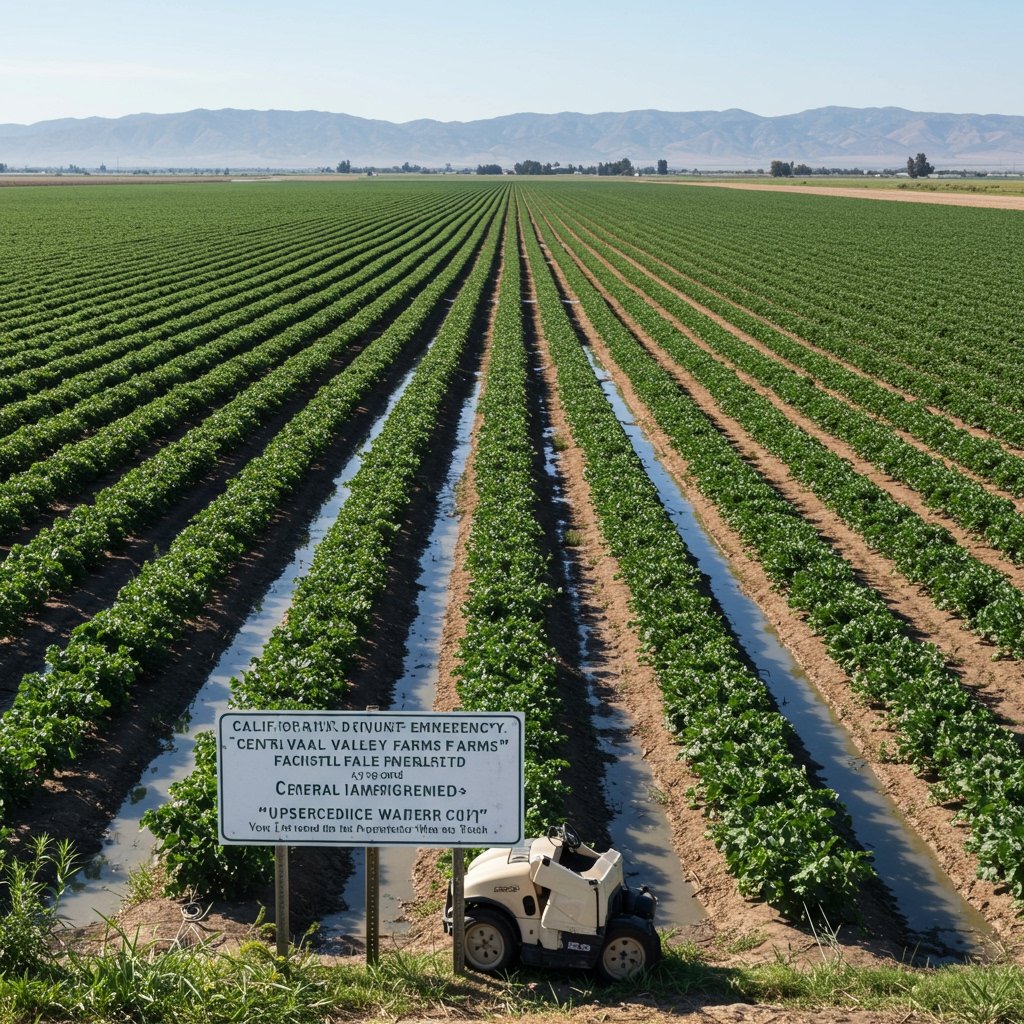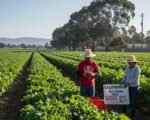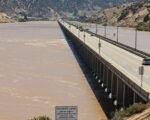California Implements Severe Water Cuts for Central Valley Farms Amid Deepening Drought
Sacramento, California – The California Department of Water Resources (DWR) announced on May 23, 2025, emergency water allocation reductions for agricultural users in the State Water Project (SWP) service areas within the Central Valley. Citing rapidly depleting reservoir levels and a critical lack of snowpack recharge following another season of low precipitation and high temperatures, the state has mandated a stark 75% reduction in water deliveries for the upcoming irrigation season.
This significant cut is being described by state officials as necessary to preserve minimal carryover storage for potential future dry years and to prioritize critically needed water for essential municipal use, environmental protection, and health and safety requirements. However, the decision delivers a severe blow to the Central Valley, the agricultural heartland of California, which relies heavily on SWP water to irrigate millions of acres of crops.
Context of the Deepening Drought
California has been grappling with increasingly severe and prolonged drought conditions over the past two decades, exacerbated by climate change. The current situation, building upon several preceding dry years, has left the state’s major reservoirs—including critical SWP facilities like Lake Oroville and San Luis Reservoir—at dangerously low levels. The Sierra Nevada snowpack, which historically serves as California’s largest surface water reservoir, providing about a third of the state’s water supply as it melts through the spring and summer, registered significantly below average this year. This lack of natural recharge into the system has created a critical deficit, forcing difficult decisions regarding water allocation.
The SWP is a complex system of reservoirs, aqueducts, power plants, and pumping stations that delivers water from Northern California to the San Francisco Bay Area, the Central Valley, and Southern California. Agricultural users in the Central Valley represent a substantial portion of SWP deliveries in normal years, irrigating some of the most productive farmland in the world.
Impact on Central Valley Agriculture
The unprecedented 75% cut specifically targets agricultural contractors within the SWP’s Central Valley service areas. This reduction will impact hundreds of thousands of acres dedicated to high-value crops. Among the most affected are permanent crops such as almonds and pistachios, which require consistent water supplies and represent significant long-term investments. Other critically impacted sectors include those growing various vegetables, fruits, and other row crops, which often rely on surface water allocations for successful yields.
For farmers, a 75% reduction means they will receive only a quarter of their contracted water allocation from the SWP. This level of scarcity forces incredibly difficult choices. Many growers will be compelled to fallow significant portions of their land, leaving fields unplanted to conserve scarce water resources for their most valuable or young trees and vines. Others may attempt to stretch limited supplies through highly efficient irrigation methods, if feasible, or rely more heavily on expensive and often less reliable groundwater pumping, which further strains already depleted aquifers.
Economic Repercussions and Industry Reaction
Agricultural representatives across the Central Valley voiced grave concerns following the DWR’s announcement on May 23, 2025. Leaders from farming associations and water districts highlighted the devastating potential consequences of such a severe cut.
Key concerns raised include:
* Potential Yield Losses: With significantly less water available, crop yields are expected to decline sharply across the board. For permanent crops like nuts, insufficient water can lead to reduced production for years to come, not just in the current season.
* Rising Food Prices for Consumers: Reduced supply of California’s agricultural products, which feed the nation and the world, is highly likely to translate into higher prices for consumers at the grocery store. The Central Valley is a major producer of many staple crops, and a production decrease will ripple through the supply chain.
* Significant Economic Hardship: The financial impact on farmers will be substantial. Reduced revenue from lower yields, coupled with increased costs for alternative water sources (like pumping groundwater) and labor for potentially fewer acres, could push many operations to the brink. The economic pain extends beyond farm owners to farmworkers who face job losses or reduced hours, as well as businesses that support agriculture, such as equipment suppliers, processors, truckers, and packing houses.
Representatives from the agricultural sector emphasized the long-term nature of the damage, noting that planting cycles, especially for permanent crops, span many years, and disruptions due to water scarcity have lasting effects on the industry’s viability. They reiterated calls for greater state investment in water storage, infrastructure improvements, and innovative water management solutions to build resilience against future droughts.
While acknowledging the severity of the drought, agricultural groups also questioned the allocation priorities, advocating for a more balanced approach that considers the vital role of agriculture in the state’s economy and food security. The coming irrigation season is anticipated to be one of the most challenging on record for Central Valley farmers operating within the State Water Project service areas, testing their resilience and adaptation strategies in the face of historic water limitations.








